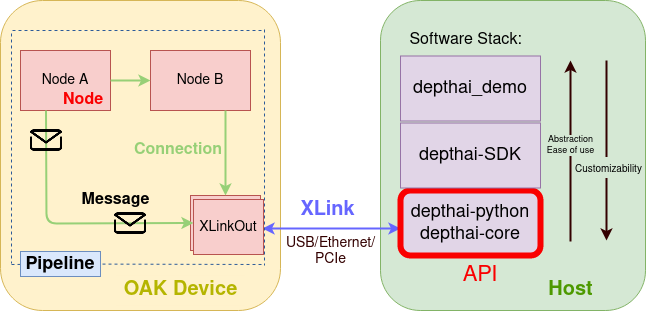DepthAI API Documentation¶
DepthAI API allows users to connect to, configure and communicate with their OAK devices. We support both Python API and C++ API.

Host side is a computer, like PC or RPi, to which an OAK device is connected.
Device side is the OAK device itself. If something is happening on the device side, it means that it’s running on the Robotics Vision Core (RVC). More information here.
Pipeline is a complete workflow on the device side, consisting of nodes and connections between them. More information here.
Node is a single functionality of the DepthAI. Nodes have inputs or outputs, and have configurable properties (like resolution on the camera node).
Connection is a link between one node’s output and another one’s input. In order to define the pipeline dataflow, the connections define where to send messages in order to achieve an expected result
XLink is a middleware that is capable to exchange data between device and host. XLinkIn node allows sending the data from the host to a device, while XLinkOut does the opposite.
Messages are transferred between nodes, as defined by a connection. More information here.

Above there’s a graph representation of a (more complex) 2-stage pipeline of the age-gender recognition demo. Graph contains different Nodes connected (linked) to each other. DepthAI Pipeline Graph tool was used to generate this image.
Getting started¶
First, you need to install the DepthAI library and its dependencies.
After installation, you can continue with an insightful Hello World tutorial, or with code examples, where different node functionalities are presented with code.